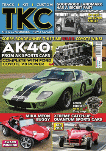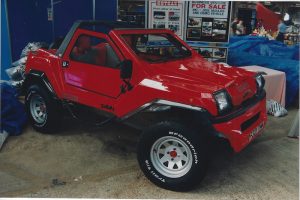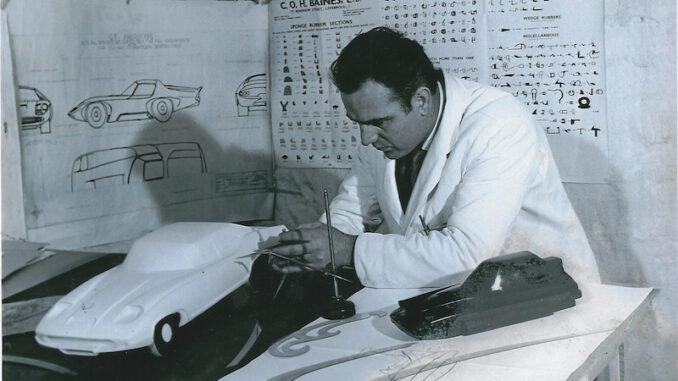
We were very sad to hear of the death of Dennis Adams recently. Here we pay a little tribute to one of the specialist car industry’s cleverest designers. Best-known for his work at Marcos, of course, there was so much more to Adams than that and his 55-year career spawned a wide variety of always innovative creations. It was a working life that was definitely varied.
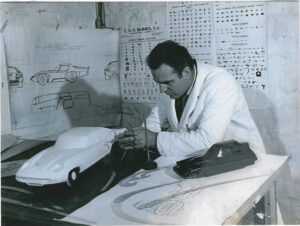
Dennis – and his engineer brother Peter – hailed from Great Shelford, Cambridgeshire. A job at local company – Lister Cars – introduced him to Brian Lister and motorsport, in general.
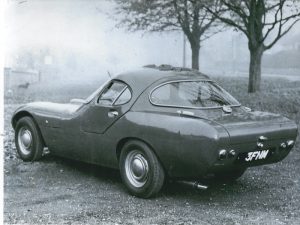
His duties at Lister Cars included working in the machine shop, fabricating chassis and other parts plus brazing wishbones, chassis and various other metal components.
By this time, in the early fifties, he’d already built a couple of specials, one of which was definitely Lagonda-based.
While at Lister, Dennis also met another automotive design great, Frank Costin, who was working in the prototyping development shop. The two hit it off straight away and collaborated on building Frank’s only steel – rather than timber – spaceframes.
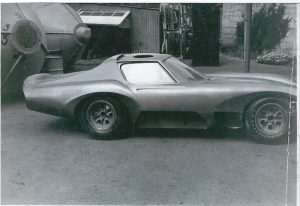
Frank soon headed off to join Jem Marsh of Speedex in Luton to co-found the Monocoque Body & Chassis Company, which soon became Marcos, of course, where the Adams brothers soon headed, too.
Dennis told me once that he and Peter called MBC ‘All-to-Cock, shoddy & Bashy Company’.
Prior to joining Jem and Frank, the Adams’ had collaborated on their own car called the Adams Experimental Prototype (aka XP) in 1962. This wasn’t the car with the same name that Dennis came up with in 1968, whicle at Marcos.
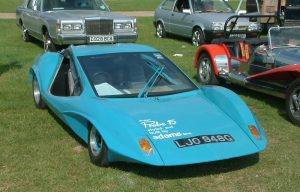
Dennis’ first task at Marcos was to restyle Frank’s Gullwing (‘Ugly Duckling’) which didn’t go down well with Costin. Adams’ first Marcos design under his own name was the Fastback in 1963 with the all-time classic, GT following a year later. That was the car that defined a manufacturer and that basic shape lasted for nearly 45 years.
Dennis continued to design for Marcos for many years but he left Jem’s employ – with his brother – in late 1964, preferring to focus on freelance work, yet remained on a retainer with Marcos up to and including the LM500 of 1993.
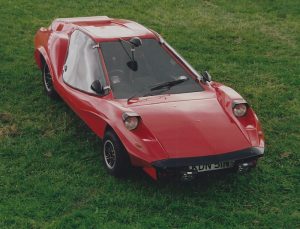
It wasn’t just car-related stuff that Dennis got his pencils out for as other designs were produced including a clockwork apple for Corgi, which spat out plastic maggots, an advanced-looking three-wheeler, church steeples made from GRP, boats, bobsleighs, motorcycles and work on the very advanced Quasar for Malcolm Newell and his friend Ken Leaman.
Then there was a single-seater racing car, the Tip-Up micro computer car, a range of furniture and a stillborn Le Mans car in 1963 for Anglia Racing Developments where John Tojeiro was employed at the time.
There were also a couple of special commissions; one of which was a heavily revised Marcos for a South African customer and also the intriguing ‘Marcos Bentley’ in 1964. Another one was the Marcos Sabra for an Israeli client.
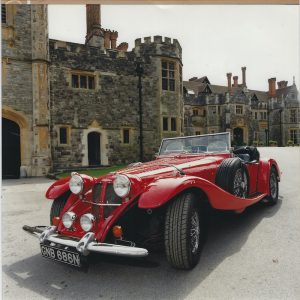
Dennis and Peter had based themselves – post-Marcos – in the Old Forge, a very historic building in Bradford-on-Avon, next door, incidentally, to Jem Marsh’s father, who ran an antique shop.
While the Adams’ were doing their daily work, they’d often see coach parties of daytrippers arrive to look around the historically interesting building. Ever the innovator, they produced a special range of items to tempt the visitors with – stuff like fire grates, gates, candlesticks and vase holders, which Dennis said sold very well. So successful was this side of their buisness that they developed it and became known locally for their fine wrought iron work.
It was 1968 when Probe 15, so-called because it was Dennis’ fifteenth design. Or so he thought. It was actually his seventeenth! It was, however, the world’s lowest car at 29in until Andy Saunders got cracking with his brilliant hot rods from the 90s.
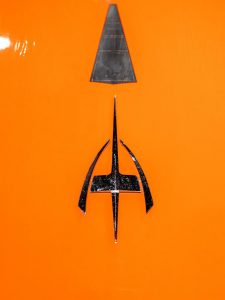
Probe 15 used a wooden monocoque clothed in a GRP body and a Hillman Imp 875cc engine and much of its running gear besides. The Adams brothers were genuinely excited by Probe 15 and talking to me in 2020, Dennis told me: “It was the car we’d always wantd to do. A car free from convention and regulations,” he said.
It actually made its debut at The Racing Car Show in January 1969, where it went down a storm. Seemingly every national in the world stuck it on their front cover the next day. Although they could have taken a lot of orders both at the show and subsequently, it was still a prototype. “One chap thought it was a large objet d’art rather than a motor car you could drive and wanted one for outside his mansion,” Dennis recalled.
The shakedown test for Probe 15 took place at Keevil Airfield in June 1969, where legendary songwriter Jimmy Webb (‘Wichita Lineman’, ‘Up, Up and Away’ and ‘MacArthur Park’ to name but three was one of the test drivers.
Dennis and Peter didn’t have any intentions to put Probe 15 into production despite the demand. There were too many compromises, such as a virtual horizontal driving position and almost flat windscreen, which made driving on the road a challenge. It really was intended as a design study, I think.

The prototype was sold to Paul Michaels of Hexagon Motors in Highgate, before he sold it to a customer in South Africa. Possibly the same chap who’d bought a previous Adams design.
The Adams brothers then turned their attention to a proper roadgoing version, the Probe 16. This was slightly longer and taller (34in), while the Imp engine had given way to a BMC 1800cc unit. To make it perform better Jan Odor of Janspeed tuned it.
The car appeared on a joint Daily Telegraph and IBCAM (Institute of British Carriage and Automotive Manufacturers) stand at the British Motor Show of October 1969 at Olympia. Reception was incredible, just like with Probe 15 and the car won an award for its innovation.
Celebrities like Jimmy Webb and Cream bassist, Jack Bruce bought two of the three built. Bruce bought it as a birthday present for his great friend, Mountain drummer Corky Laing.
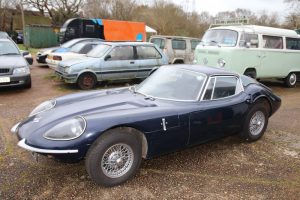
Dennis Adams quoted in period: “If you wanted absolute stability in the early days, well before suspensions were properly sorted out, you got everything as low as possible. However, if the suspension geometry was wrong, half of your efforts were wasted because the car still handled badly on corners.
“I then started to think about getting roll centres higher and higher and the combined roll axis higher, throughout the car. This was at a time when people were reluctant to build cars with no roll.
“Even my friend Frank Costin was convinced that a car had to roll, to give a driver a bit of feel on corners. I was convinced this was wrong and if anything, it should pendulum the other way.
“The Marcos 1800 was the first car that Peter and I did that had absolutely no roll; the roll centre was so high, that the car just shoved you sideways in corners. Getting everything ultra-low is only necessary if you are doing a screaming on-the-limit racing car, to enable you to pull every ounce of benefit from the design. With a road car this isn’t essential.”
What the Probe designs had done was cement Dennis’ reputation as a fine designer, or ‘one of the UK’s greatest fringe designers’ as one young kitcar journalists once described him as. I know Dennis was very versatile but I don’t think he ever did haircuts!
Probe 16 was taken over by a Solihull-based company called Concept Devopments, productionising it as the Concept Centaur, althopugh it passed on again to Mirage Developments of Biggin Hill, Kent renamed the Pulsar in 1978.
Dennis and Peter announced Probe 2001 in 1970. This was financed by a well-known, yet un-named businessman, who wanted it to be more practical (everything is relative!) and they added 4in in length while it now stood at 37in high! Doorlets were added although it retained its sliding canopy roof .
Unfortunately, the financier withdrew his backing and although they tried to carry on, the writing was on the wall and the company collapsed in April 1971, after four 2001s had found homes. There was also a Probe 7000, a 4.7-litre Oldsmobile-powered version intended for the American market, which was stillborn.
Production rights were subsequently acquired by Scottish company WT Nugent (Engineering) Ltd of Ayr, run by Bill Nugent. He actually continued to produce the cars in a factory in Bradford-on-Avon (near the Adams’ old base, but using their staff) and built six more before moving production to Scotland, where another six were produced. They went into receivership in May 1973.
In 1970, Dennis had designed the Marcos M70, which was Jem Marsh’s idea for a luxurious model aimed at well-heeled businessmen described in adverts as: ‘For the man who is going places and wants to do it in style.’
Dennis did the basic design before Jem took it in house to finish. As a result, Adams always felt that it fell short of what he intended. It was withdrawn after 32 had been sold. That car made a comeback some sixteen years later, albeit briefly, as the Autotune Mirage, incidentally, where I think another four were sold.
In 1975, Dennis emigrated to the USA. He got a job working for Charlie Massing at Classic Motor Carriages in upstate New York on their neo-classic leviathans although they also produced Cobra and Porsche Speedster replicas. Dennis worked on new model development for CMC.
New owner George Levin (from 1978) tasked Dennis with creating new models starting with the Destiny and a revised Gazelle, plus a lavish one-off Bugatti Royale replica. I think Dennis also designed an electric car for them, too.
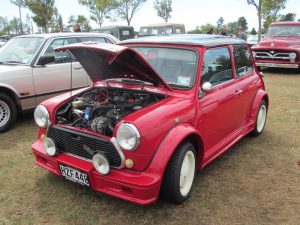
Yearning for home he moved back to England in 1980, where he got a job as an industrial designer for Villiers, while also penning a generator for Hawker-Siddeley. In 1983, Jem Marsh asked him to revise the Marcos 3-litre GT into what became the Mantula Coupé (complete with Rover V8), with a convertible version in 1985.
Range Rover ‘stretchers’ Glenfrome Engineering engaged Dennis’ services to create the angular, yet well-specced Facet in 1984. He just managed to complete a convertible version called the Profile before the company went into liquidation.
In 1985 came the iconic Adams Roadster, which in its own way was a gamechanger and Dennis’ 28th design. The first two were based on Opel running gear although Dennis soon changed to Jaguar components. He engaged the services of some former Marcos employees including foreman Roger Barker at his Adams Roadsters Ltd operation.
It’s easy to dismiss the Roadster as just a Jaguar SS100 clone but that would be an insult to the beautiful work that Dennis used on the car. It was a greatest hits featuring all of his skills. It’s a crying shame that only twenty or so Adams Roadsters were sold between 1986-1992.
Next up for Dennis was the Rotrax, derived from the Glenfrome Profile that never did quite see the light of day. So, instead, he launched it as a kitcar. It was one of Adams’ favourites and he described it as ‘the thinking man’s beach buggy.’
It was well-received but although it looked like a full-on off-roader it didn’t have a limited slip differential (it was based on Ford Cortina) and two-wheel drive and was therefore limited as to where it could go. He offered two versions – the Sport and the Safari, which was a 2+2 version.
An early Rotrax customer, Dartford garage proprietor Barry Chantler, restyled his Rotrax with a chainsaw and fitted a Rover V8 to it. He felt that this would give it proper go-anywhere potential. He took his revised car to show Dennis who loved it.
An extra 8in was added to the wheelbase (stretching it to 100in) matching it to that of the Range Rover Classic. This was initially known as the Rotrax V8 and Dennis soon gave Barry full rights to the V8 version before Chantler acquired it completely, renaming it as the Dakar. Over the next decade, hundreds of Dakars were sold. It became an industry great.
If we’re looking at volumes, Dennis’ biggest-selling creation was the ERA Mini Turbo conversion of 1989, a fine performing, luxurious Classic Mini, equipped with a Garrett T3 turbocharger sold via Austin Rover dealerships. The 12 grand asking price deterred some but by the time production ended in 1991, around 440 had been sold.
Final projects that came Dennis’ way, before he retired included a revised Allard J2X in 1991, although just three were sold. His final hurrah was in 1993, when he proudly assisted his nephew (Peter’s son), Leigh on the firebreathing Marcos LM500 Spyder. A fitting beauty with which to end.
So there you have it, a potted guide to Dennis’ marvellous career in about 2200 words. I always enjoyed talking to Dennis. He always spoke a lot of sense and would happily give an opinion when asked. He was also very kind to me – RIP, Dennis Adams.

